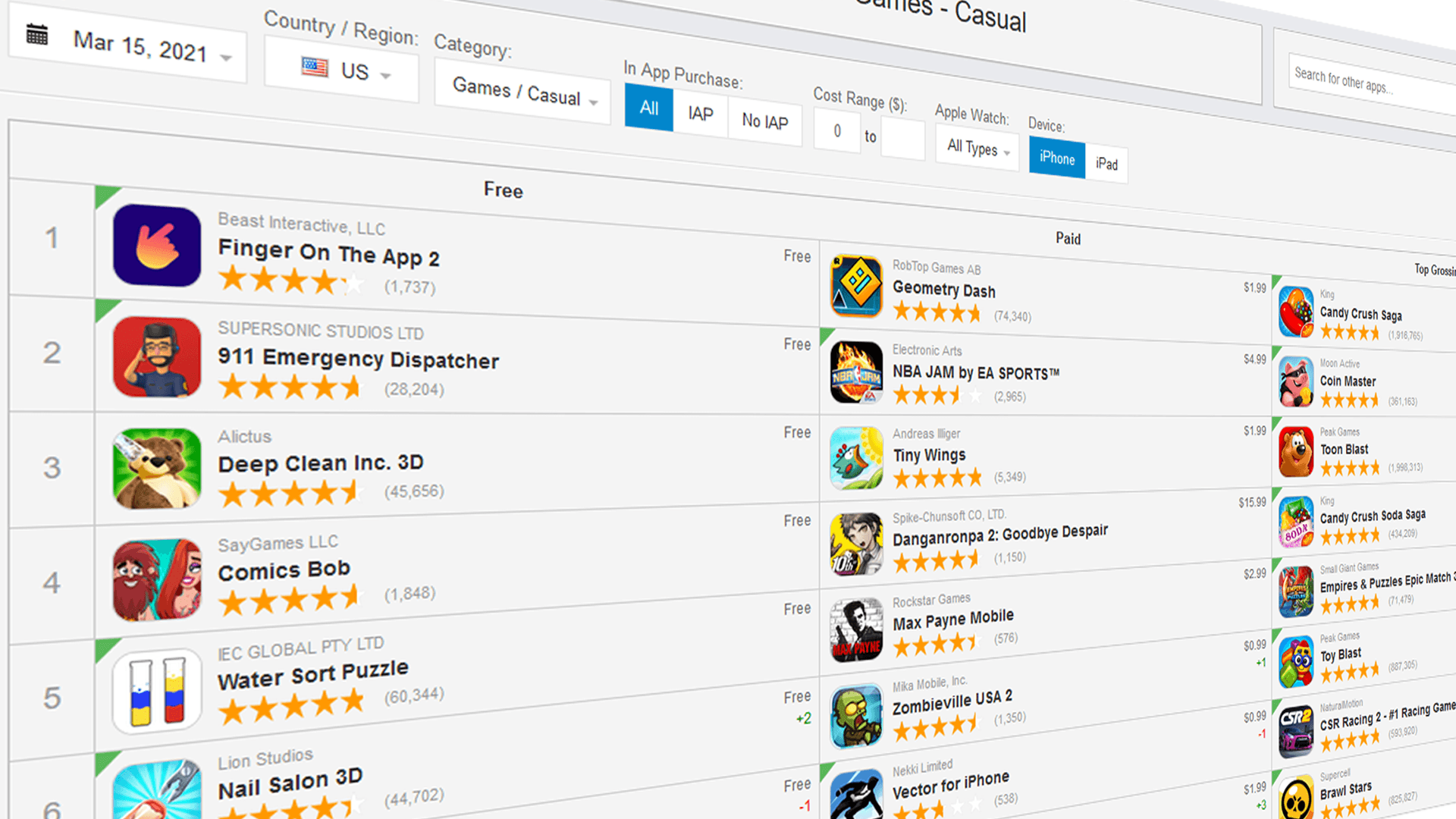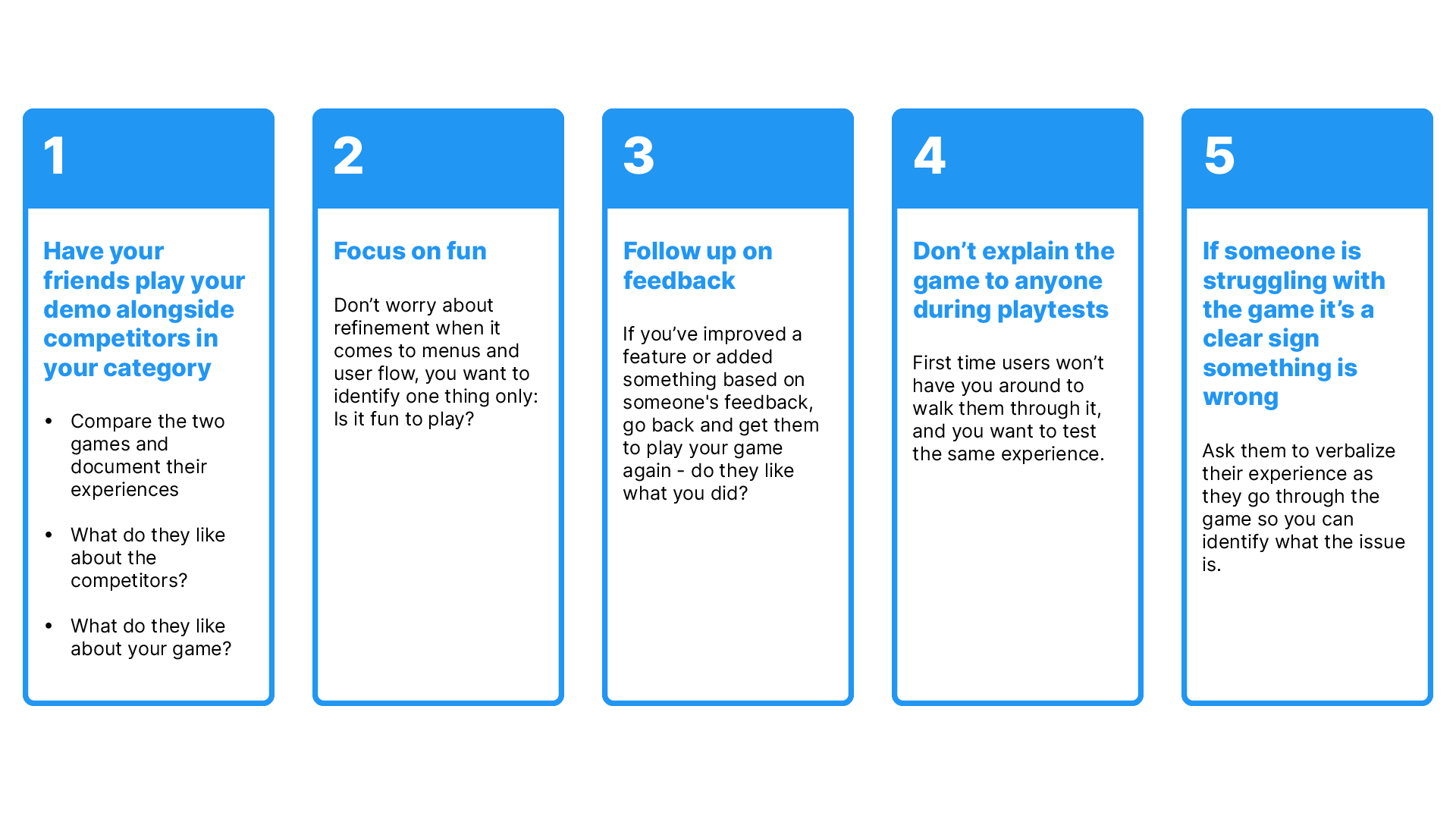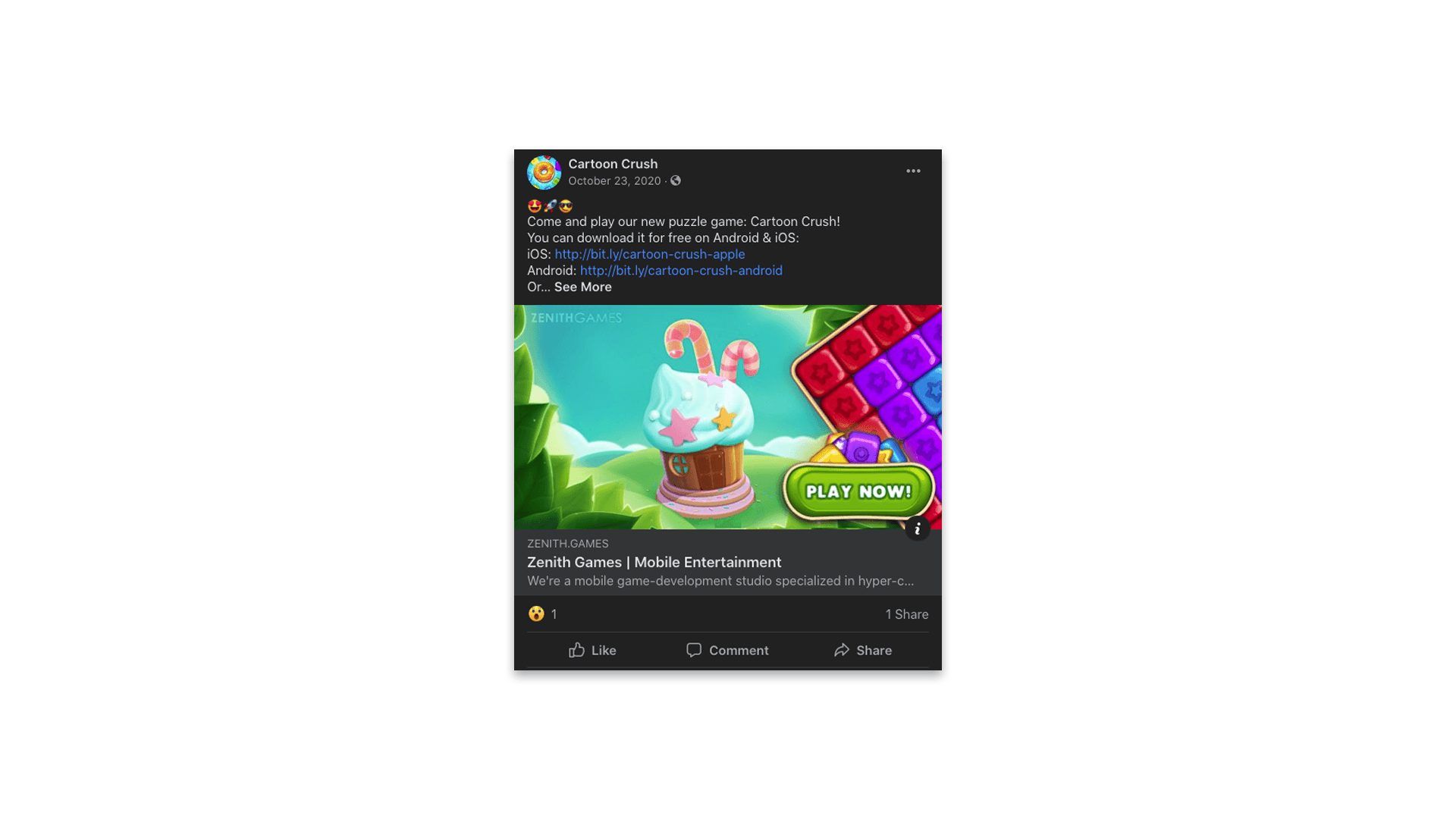How to qualify your concept and find the ideal market for your mobile game
Tutorial
·
Beginner
·
+10XP
·
40 mins
·
(394)
Unity Technologies

In this tutorial we’ll explore how to identify the key areas in your game, perform a competitor analysis, and ensure your game is a good market fit.
Languages available:
1. Overview
Every game starts with an idea - but how do you make sure it’s a good one?
If you’re serious about making your mobile game a financial success, it must appeal to the right audience. Unique ideas are always the best, but building in the “fun factor” is universal and should always be tested early on.
Exploring your idea early is also important for another major reason, prioritization. While it’s easier for larger studios to test multiple concepts and games at the same time, resources and prioritization are always top of mind for an indie developer. While early research is not a guarantee of success down the road, it can often put your game on a much better path.
One big concept we’ll explore is how to perform this research in a cost-efficient way, without the need for enterprise-level tools, big budgets, or specialized staff. Much of this relies on getting scrappy with the tools available and leveraging competitors in your genre.
In this tutorial we’ll cover:
- How to qualify your game concept.
- How to benchmark your game against competitors.
- How to find the right audience for your game.
2. Mapping out your game concept
Qualifying your game concept early is essential for two main reasons. Firstly, it positions your game better for future development and gives you a blueprint for moving forward. Secondly, it helps you avoid the “Frankenstein's monster” effect, where your game is a mashup of concepts, themes, tones, and features that don’t quite fit together - with the result not appealing to any specific audience.
It all starts with these questions. Put pen to paper and document everything you know about your game right now. Try to answer the questions in the last section as much as possible and prepare to build on your notes with insights and data from the real mobile market.
What is your core game mechanic?
This may seem obvious, but identifying early on whether your game will be classified as a Match-3 Puzzle game vs. an Endless Runner is key for thinking about market fit, competitors, tone, and marketability.
What themes are typically bundled with your game mechanic?
There are usually some pretty defined trends when it comes to themes and game mechanics, and making sure your game fits with player expectations is a big deal. As an example, most puzzle games typically feature lighter fantastical themes (Candy Crush), so if you’re thinking of going dark and gritty - that’s something to consider carefully.
Is the theme of your game underserved?
An underserved theme can present a huge market opportunity for your game. There are typically pretty clear trends in gaming that you can hit on, like the meteoric rise of hypercasual games with bright, colorful themes. Part of your research should include mapping out a potential niche for your game to slide into.
- Are players asking for something? Part of your research should be identifying pain points in your competitors games - features, gameplay mechanics, or content players are asking for.
- Is there an opportunity to take something successful in your genre and transform, change, or improve it? Looking at what competitors are doing well in your category can help source opportunities.
Does your tone work with your core game mechanic?
There are pretty clear expectations from players when it comes to the tone of your game. More hardcore games with expansive mechanics like Last Day on Earth: Survival will feature dark, grittier visuals and overall tone. Likewise, casual puzzle games like Cartoon Crush benefit from a bright and fun aesthetic that works well with the core match-3 game mechanic. If you’re building a gritty action-adventure game but the theme is whimsical and bright, it may result in a poor experience for players.
- If we map this aesthetic to this game mechanic, does this work in the past?
Why should anyone play your game?
You probably think your game is fun, but it’s important to make sure others agree with you. Identifying the fun factor in your game is more complicated than it sounds, it’s often more than just a single mechanic (although sometimes it is). Mapping out exactly what makes your game fun is important early on, you can refine that mechanic/feature and make sure it doesn’t get watered down in the development process.
- This is typically an exercise you will run with your studio or close stakeholders (family counts as well!).
In the next section we will explore how to use analytics tools and research methods to compare your game to competitors.
3. Benchmarking against competitors
As an indie developer, finding creative and cost effective ways to set your game up for success is key in the early stages of development. One major practice is to perform a competitive analysis - looking at the other developers in your category to better understand how to position your game. This allows you to not only benchmark your game against the “best” of your genre, but also serves as a valuable source of information from players.
Diving into the analytics
We recommend using a mobile analytics tool like Sensor Tower to start looking at other games in your category. They have some cheaper options for indie developers, and the cost is well worth the information. That being said, you can also get similar (but less detailed) information simply from viewing the top performing charts on iOS or Android.
- Take a look at the top games. The top 3 in your category are your competitors with the largest market potential and the top grossing games typically have more in-app purchases.
- Play these top games. Document all the features you like and create a matrix across multiple top games in the category. Are there similar features? What are all these games doing well? What are they not doing well? Are players asking for anything consistently?

Getting social
Outside of analytics tools, research from other people is a huge factor when working on your game concept. This is ideally done with players who can give you unbiased feedback, but it’s also okay to use friends, family, and colleagues. The idea is to test the “fun factor” of your game before you invest too much into development.
You can be certain your competitors, especially larger studios, will extensively playtest their games early - don’t miss out on the same opportunity.

Red ocean vs. blue ocean
A nice way to start looking at your competitive landscape is in terms of “red ocean” vs “blue ocean”. Essentially, a red ocean defines an existing area that is highly competitive with multiple studios creating impactful popular games. An example of this would be creating a match-3 puzzle game, where your goal is to beat the competition and leverage an already existing playerbase.
The flipside is the blue ocean, where there is an uncontested market space without much competition. You don’t need to battle competitors for players, but you also don’t have a huge pool of players to draw from. Instead you must work to create interest in your unique game, which can be challenging as well.

Paid testing
If you have the available budget, running paid tests on Facebook can be a great way to get information from players early on. You can test everything from the tone/aesthetic to specific gameplay features and mechanics. Even a few hundred dollars can give you valuable data on the direction you can take your game.
- Create multiple trailers with different styles and gameplay elements you want to test.
- Document which trailers are being clicked on the most by players, use the audience data to build personas.

The next section focuses on how to build an audience profile for your indie game. This will give you the specific details to identify and target players most likely to engage with your game.
4. Finding the right audience
One of the most important questions you will ask yourself during the concept phase: Who is this game being built for?
Thinking about your audience early on is essential for long-term success. Defining your audience not only allows you to focus in on feature development, it’s also key for building a user acquisition strategy and subsequent campaigns.
Research game genre trends
Hopefully you’ve nailed down your game genre at this point, which is the perfect kicking off point for audience development. Knowing where you fit in the market will help you determine things like:
- Average age and gender of players.
- Top countries worldwide for your type of game.
- Average income for your players
Start building a persona
Using some of the data points you’ve gathered in the first step, start creating a “persona” for your user. This is essentially a profile that outlines the type of person your player is, you can go as in-depth as you want. Using a guide like this, outline the following:
- Personal Name
- Age
- Job/education
- Location
- Wants/desires
- Pain points and challenges
Identify where you can reach your audience
Once you have your persona down, it’s time to find out where you can connect with your audience. This will help you determine where to launch (and soft launch) your game, which territories to prioritize, and the parameters for future user acquisition efforts. Specifically, you want to identify:
- Which countries to focus on.
- Social media channels popular with your players
- Websites/news channels relevant to your players
5. Summary
In the past several sections we’ve covered why research can be one of the most important factors for indie developers early in development. With limited resources and staff, knowing exactly what to focus on can make all the difference.
Our goal is to give you the tools to face off against the larger studios in your category and use cost-effective but impactful methods to build incredible player experiences.
In the next tutorial we will focus on how to craft a playable demo of your game:
- The benefits of a playable demo
- What to build into your game demo
- How to build your demo
- How to structure a user experience (UX) test